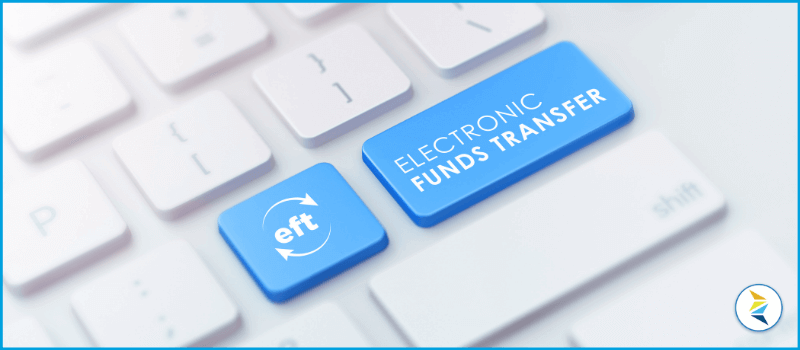With the world evolving rapidly with technology, many people are ditching the use of physical cash to perform transactions. That’s thanks to the electronic funds transfer (EFT) technology— a means for money to exchange hands electronically. It is fast, convenient, efficient, and secure.
Below is how you can manage an electronic fund transfer and why it is an excellent financial decision for your business.
How an Electronic Funds Transfer Works
EFT payment technology involves two parties: a sender and a receiver of funds. The starting point of the payment happens when the sender initiates a transaction. Its ending point happens once the payment hits the receiver’s bank account.
For most payments, an Automated Clearing House (ACH) clears the transaction through the Federal Reserve System before it hits the receiver’s end. The ACH checks for fund availability and authorization from sender and receiver accounts.
Depending on the type of EFT payments, a transaction fee may apply. This is information you should learn before making or receiving an EFT payment, especially in business since it can affect your budget and taxes.
Make and receive payments electronically in the following ways:
- Direct deposits – It’s an efficient way to pay employees since it’s charge free. A direct deposit system transfers money through an ACH network.
- Automated Teller Machines – You can deposit, withdraw, and move funds without visiting the bank using an ATM card.
- Mobile wallet services – (Google Pay, Apple Pay, and Samsung Pay)
- Wire transfers – They come in handy when you want to transact vast amounts of money.
- Electronic checks – They are used to facilitate vendor payments
- Debit/ credit cards
- Personal computer banking – It uses the concept of online banking to facilitate bank transactions.
- The Electronic Federal Tax Payment System – It’s a tax payment system you can use with the Internal Revenue Service.
You can complete an EFT payment in the following ways:
- An automated phone call
- Your online banking account (ensure the website is secured)
- A credit/debit card reader
- A mobile bank application
All You Need to Complete an Electronic Funds Transfer
To complete an EFT payment, and depending on the type of payment, you need the following:
- An electronic system with an electronic funds transfer
- Sender and receiver bank account numbers
- Credit/debit card details
- A routing number
- Phone number
- Date of the payment
- Security code
Processing Time for EFT Payments
The processing time for your payment lasts anywhere between the same day and four days. Payments you make during business day hours are often cleared and available the same day. If you transact after the close of business hours, you’ll have to wait until the next day. The amount of time necessary to process your payment depends on:
- The type of payment
- Whether your transaction is within or after business hours
- Your provider
- If it’s an international payment or a high-value transaction
How to Stop an EFT Payment
To get a refund for a payment you sent wrongfully, you’ll have to hassle the receiver yourself. Many providers do not get involved. You can stop recurring or scheduled payments by notifying your provider. Make sure you do it at least three days before it happens.
Safety with Electronic Funds Transfer
The Electronic Fund Transfer Act (EFTA) protects you against any malpractices that may arise with EFT payments. The act addresses information disclosure, record retention, error correction, and consumer liability issues. You can sue the provider for damages if they violate consumer protection laws. Protections you’ll enjoy under EFTA include:
- Withdrawal limits
- Unauthorized transactions
- Compensations for violated EFTA guidelines
- Loss/theft of debits cards
Timelines limit your liability for unauthorized transactions. Report unauthorized transactions and loss/theft of debit cards to your financial institution within 60 days. Monitor your account regularly for malicious activities and report to your provider if you notice anything.
EFTs Are Worth a Try
Besides being convenient, these payments guarantee security that isn’t always possible with in-person transactions. Secure business resulting from EFT payments use establishes trust and excellent long-term relationships between establishments.
Manage Your Funds Easily
An electronic funds transfer is helpful to both businesses and consumers. It eliminates all the paperwork, time consumption, and human errors that result from in-person transactions. It also makes it possible to transact from anywhere in the world effortlessly.





Be First to Comment